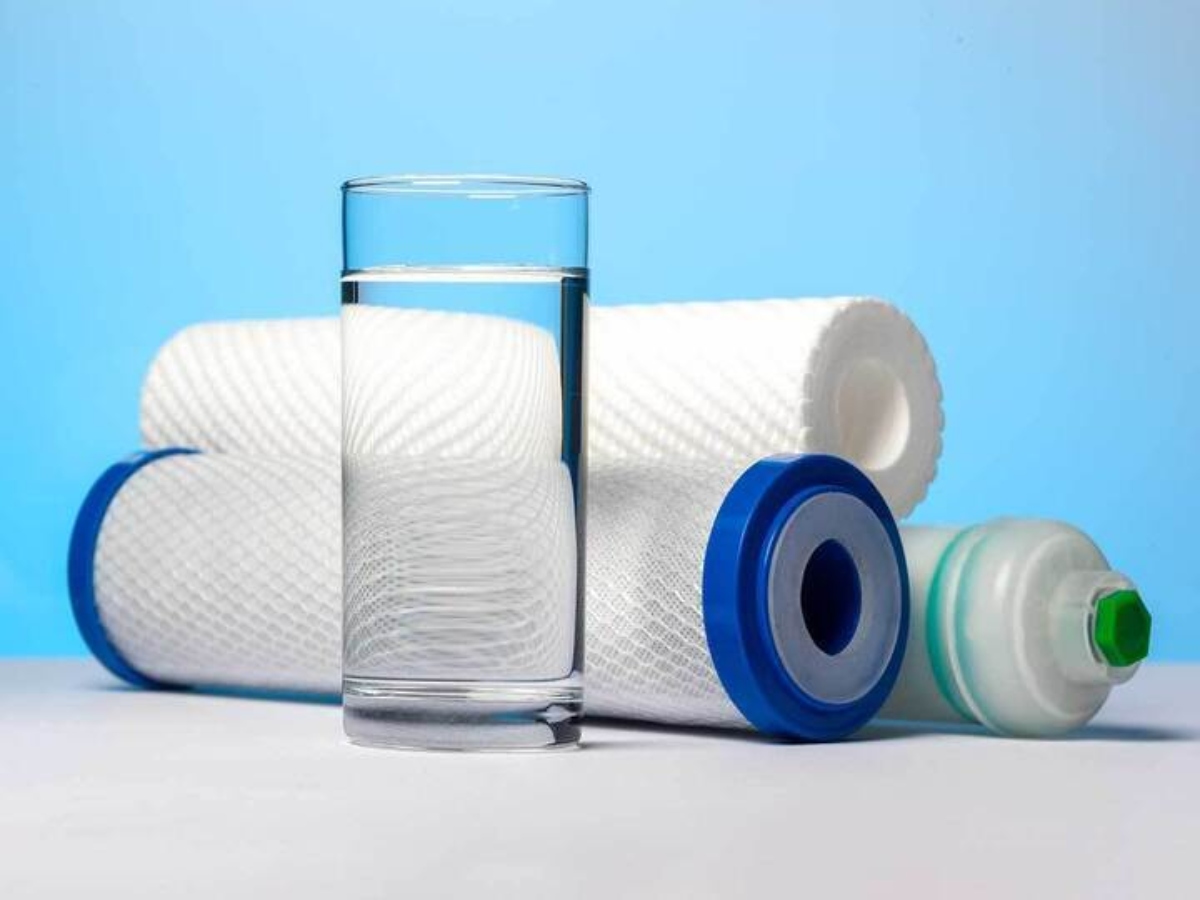.Do you want to know how to replace your reverse osmosis water filters? If you want to harness the benefits of your RO system, you should know when and how to replace its filters.
To replace your reverse osmosis water filters, shut off the water supply, unscrew, and remove the old filter casing one at a time. You can replace either the first two or all the filters depending on the cycle of your RO system. If you want to ensure the optimal effectiveness of your entire reverse osmosis water filters and ensure quality water, you should ideally replace them every 12 months.
Reverse osmosis is a highly reliable solution for producing pure, high-quality drinking water. Furthermore, it eliminates assorted chemicals and bacteria from your water and makes it safe for consumption. Well, in this article, we’ll share the essential steps you should take when you want to replace your reverse osmosis water filters.
Step-by-Step Guide To Replacing Your Reverse Osmosis Water Filter
Most reverse osmosis water filters are the same; however, the units vary in shape and make. That’s because there are different manufacturers across the world. Furthermore, some RO systems are updated and more aligned with modern standards.
Therefore, selecting the most appropriate type and size of filters for your reverse osmosis water system is essential to make it more efficient and effective.
The following are the steps you should take if you want to replace your reverse osmosis water filters.
Step 1: Buy The Right Replacement Filters
The first thing you should do before you replace your reverse osmosis water filters is to purchase the correct type of filters for your unit. It would be best not to open the filter packages – they should remain intact until you’re ready to use them.
Step 2: Shut Off The Water Supply and Unscrew Filter Housing
To replace your reverse osmosis water filters, turn off the water supply by closing the valves on your RO system and water holding tank. Turn these valves until they are entirely closed.
Step 3: Remove the Cylinders
If you’re ready to replace the filters, thoroughly wash your hands with soap and water. It’ll help you avoid transferring bacteria into the system.
Carefully unscrew the housing of the filters until they come off the RO system one at a time. These cylinders have water, so it would be best to set a bucket ready to collect spilled water.
Step 4: Remove The Filters
Each reverse osmosis water filtration system carries different filters in each compartment depending on the size and make. Carefully remove each filter, one at a time, from the cylinders of your reverse osmosis water filter system.
Step 5: Remove The O-rings and Clean Them
Check the filter O-rings to ascertain whether or not they are in good working condition. If they are not worn out, use a clean piece of clothing to wipe the O-rings and place them on a neat surface.
However, if the O-rings are not in perfect working condition, you should replace them with new ones.
Step 6: Clean The Cylinders
After removing the filters, using clean water, rinse each to eliminate any sediments left in the cylinders.
Also, lubricate the filter O-rings and set them in their respective space. Ensure that you position them well to prevent water leakage.
Step 7: Install The New Filters
Once everything is set, remove the new filters from their packaging and place the right filter into their appropriate canisters. Screw them back on the reverse osmosis water filtration system and ensure they are firm and secure.
You can fasten them back with your hands or use a filter wrench. But do not force them too tight.
Step 8: Turn On The Water
Turn the water supply valve on and check if there is no leakage. If there is water leakage, fasten the reverse osmosis water filters. Also, check if the O-rings are put in their proper places.
When the filters are positioned, you should hear the water filling up
Step 9: Run Your Faucet
Finally, switch on your water faucet and allow water to drain completely from the tank and flow through the new filters.

Why You Should Replace Reverse Osmosis Water Filters
When your RO system is healthy, it can eliminate up to 97 percent of harmful contaminants ranging from pesticides, and nuclear particles, to parasites. Filters in your reverse osmosis system are designed to trap sediments and other impurities. Some contaminants are washed away, while the filters trap others.
Over time, these particles can make your filters function less effectively. Therefore, your RO system becomes inefficient and doesn’t purify water well. In other words, reverse osmosis water filters can accumulate debris over time, leading to clogging. Therefore, they reduce filtration speed and increase water wastage.
When to Replace Reverse Osmosis Water Filters
It’s best to replace your reverse osmosis water filters depending on their usage and the condition of your local water source. Here is a breakdown of how frequently you should replace your reverse osmosis water filters:
- The pre-filter. It filters dust and debris, and you should replace it every 6-12 months.
- Carbon pre-filter. It takes care of chlorine in your water. Therefore, replace your pre-filter every 6-12 months.
- Reverse osmosis membrane. It eliminates most contaminants. Replacement should be after every 24 months.
- Post-filters. They ensure that your water has a fresh taste. Replace your post-filters after every 12 months.
How to Know if Your Reverse Osmosis Water Filters Need Replacement
Reverse osmosis water filters don’t last forever. Therefore, replace them more often to enjoy clean, crisp, clear, and safe water for drinking. However, how can you tell if your filters need replacement?
Your reverse osmosis water filters need replacement if you notice the following signs:
- Low water pressure
- If the water tastes bad
- If there is an odd smell in the water
- If your reverse osmosis unit sounds like it is continuously cycling through water
- If your water filter light turns on
- If there are black specks in the water
- If the appearance of the water is murky, and
- If it has worked for more than a year

The Stages of an RO System
There are four stages of filtration in a reverse osmosis system. They include:
Prefiltration
It is the first stage when water enters your reverse osmosis unit. Carbon and sediment filters eliminate sediments and chlorine, preventing them from clogging up the membrane of your RO system.
The Reverse Osmosis Membrane
Water then flows through the reverse osmosis membrane. The membrane eliminates all dissolved particles from the water.
Storage
After the water goes through filtration, it flows into a storage tank, and your reverse osmosis unit shuts off once the tank is full. Here it’s stored until when it is needed for use.
Post-Filtration
When you turn on your water faucet, water will come out of the storage tank through a post-filter. Here the water is further purified to make it tasty.
The Benefits of Reverse Osmosis
Reverse osmosis water filtration units are beneficial in the following ways:
- The units are highly effective.
- Requires no extra treatment to purify drinking water
- Eliminates all contaminants that give drinking water a bad taste
- Available in space-saving designs
- Uses a minimum amount of energy
- Easy to maintain
- Saves you money
Contaminants Removed by Reverse Osmosis
The most effective way of reducing dissolved pollutants and suspended particles in your water is using reverse osmosis water filtration systems. These RO systems can eliminate many ions, metals, organic and inorganic, and bacterial contaminants.
Generally, reverse osmosis filtration can remove the following:
- Dissolved Ions — arsenic, copper, fluoride, magnesium, mercury, sodium, sulfate, zinc, thallium, ammonia, etc.
- Radionuclides — Uranium and radium
- Per- and poly-fluoroalkyl substances (PFAs)/forever chemicals
- Particles — Oocysts, cysts, asbestos fibers, etc.
- Pesticides — Heptachlor, pentachlorophenol, lindane, and endrin
How Long Does the RO System Last?
Reverse osmosis water filtration systems are durable. They can last for up to 15 years. However, replace the membrane and its filters more often.

Replace Your Reverse Osmosis Water Filters with ONIT Home Experts
Replacing your reverse osmosis water filters regularly ensures that you get pure, uncontaminated water. Observe all standard procedures and appropriate sanitation in this article to enjoy clean, crisp, clear, and tasty water for a long time. You can also seek the help of experts in repairing, maintaining, and installing water filtration systems in your home.
At ONIT Home, we have high-quality reverse osmosis water filtration systems built from industrial-grade materials to serve your residential, industrial, and business needs with clean drinking water. We are committed to offering people the best water solutions for their homes.
We are the go-to people for providing households with customized water filtration systems that meet their needs, no matter their budget. Do you need clean water? We’re ONIT! Contact us today at 1-833-433-0331 for more information about reverse osmosis systems and more.



